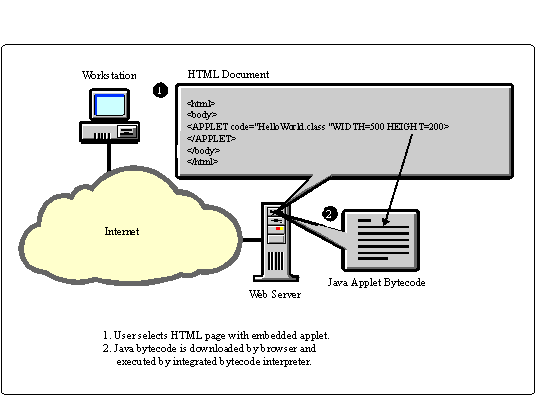URL
URL stands for "Uniform Resource Locater". It is the adress of a specific Web site or file on the Internet. It cannot have spaces or certain other charaters and uses forward slashes to denote different directories. The first part of a URL indicates what kind of resource it is addresing.
HTML
HTML stands for "Hypertext Markup Language. It is the set of markup symbols or codes inserted in a file intended for display on a World Wide Web broser page. The markup tells the Web browser on how to display a Web page's word and images for the user. Each of the individual markup code is reffered to as an element but many people also refer to it as a tag.
Javascript
Javascript is a scripting language that was developed by Netscape to enable Web authors to design interactive sites. Although it shares many of the features and structures of the full Java language, it was developed independently. Javascript can interact with HTML source code,enambling Web authors to kick up their sites with dynamic content. It is an open language that anyone can use without purchasing a licence. It is also supported by recent browers from Netscape and Microsoft.
Applets
An applet is a program designed to carry out a task from within another appication. Applets cannot be executed directly from the operating system. WIth the growing popularity of object linking and embedding, applets are becoming more prevalent. A well-designed applet can be invoked from many diffrent applications.Web browers, which are often equipped with Java virtual machines, can intepret applets from Web servers.
Blogs
A blog is a web site containing the writer's group of writers' own experience,thoughts, observation,opinions and more. Most blogs are interactive. They allowed visitors to leave comments and even message each other via widgets on the blogs.
Wikis
A wiki is a Web site that allows users to add and update content on the site using their own Web browsers because of the software that runs on the Web server. Wikis end up being created mainly by the many effort of the site visitors. One example of a large wiki is the Wikipedia. Wikipedia is a free encyclopedia in many language that anyone can edit.
FTP
FTP stands for File Transfer Protocol. It is a technique of transferring both ASCII and Binary files between networked computers. For FTP to work an FTP server must be running on the target PC and usually it requires a user-name and password to log in. FTP servers can be configured to allow anonymous access.
Plug-in
Plug-in is a software that is installed into an existing application in order to enhance its capability. Plug-ins are widely used in image editing programs such as Photoshop to add some special effect. Plug-ins are added to Web browsers to enable them to support different type of content, for example audio,video and etc.
Filters
A filter is a program that accepts a certain type of data as an input, transforms it in some manner and the outputs the transformed data. For example, a program that sorts names is a filter because it accepts the names in unsorted order,sorts them, and then outputs the sorted names.
Internet Security Suite
Internet Security Suite is a suite of utilities for maintaining the security of a software. Examples of internet security suite are antivirus,personal firewall, spam blocker and popup blocker. They offers peace of mind from a growing array of risks that increase rapidly as more PCs become accessible through the Internet.
Communication and Network
14 years ago










0 comments:
Post a Comment